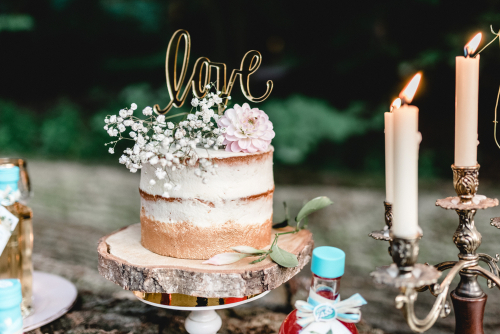Wedding Traditions and Their Interesting Origins

Though modern weddings look a lot different from similar events of the past, plenty of the wedding traditions found today trace their origins far back into history. However, few people know exactly how or why these rituals came about. From the cake to the groomsmen, almost every element of the nuptials is taken at face value. Few think to question why these are a part of the equation at all. If you’re the curious type, take a moment to delve deeper into the why and learn about how a handful of wedding traditions came to be.
Wedding Cake Traditions
Cake seems like a natural component of a wedding. Though, it does beg the question of why cake and not some other delicious confection? Truthfully, the baked centerpiece of weddings of the past was not a cake at all. Historians state that weddings during the Roman Empire often featured a loaf of bread that the groom would break over his bride’s head for good luck. It wasn’t until around 1882 that the first official “wedding cake” came to be. This was at the nuptials of Prince Leopold, Duke of Albany. From then on, it became commonplace for couples to serve cake after dinner.
Saving a piece of the cake is another part of the tradition that has been popular in more modern times. Nowadays, couples do this so that they can freeze the slice and eat it when celebrating their one-year anniversary. However, the origin of this tradition is less about romance and more about finance and babies. Couples used to save the top half of the cake as a way of saving money when announcing that they were expecting a child, which many couples aimed to achieve within the first months after tying the knot.
The Groomsmen
Arranged marriages were the norm around much of the world for a long period of time. For high-ranking families to keep wealth and status, they would arrange weddings of their children to the children of other nobles. Since daughters typically had less say than sons, there were cases of brides fleeing before the big day. The idea of the best man and the groomsmen can be traced back to these times. These men served the purpose of keeping tabs on the bride and making sure she didn’t try to run away.
The Entire Concept of “Tying the Knot”
The phrase “tying the knot” comes up a lot when referring to weddings. Naturally, this euphemism doesn’t seem to make any literal sense. Though you might assume that the phrase is meant to be a type of reference to how knots are hard to untie, much like the bonds of marriage, this isn’t why the saying exists. The oldest recorded ritual involved in marriage is handfasting. It is a process where the couple has their hands bound together during the ceremony. Though less common nowadays, the ancient tradition lives on in the current vernacular.
Crossing the Threshold
Though this tradition is not widespread now, it was once very normal for a groom to carry his bride across the threshold when first entering their home together after getting married. The reason for this is a bit hard to trace. However, most scholars agree that it was a way for the newlyweds to ward off any potential bad spirits that might attempt to plague their happiness. Another popular theory is that the act was meant to help the bride leave the home of her family without having to take the step alone.
While there’s nothing wrong with simply going through the motions of a tradition because it is part of an event, learning the reason for a ritual can make things a lot more interesting. Dive into the origins of whatever wedding traditions seem most fascinating to you and plan your wedding on a whole new level.














